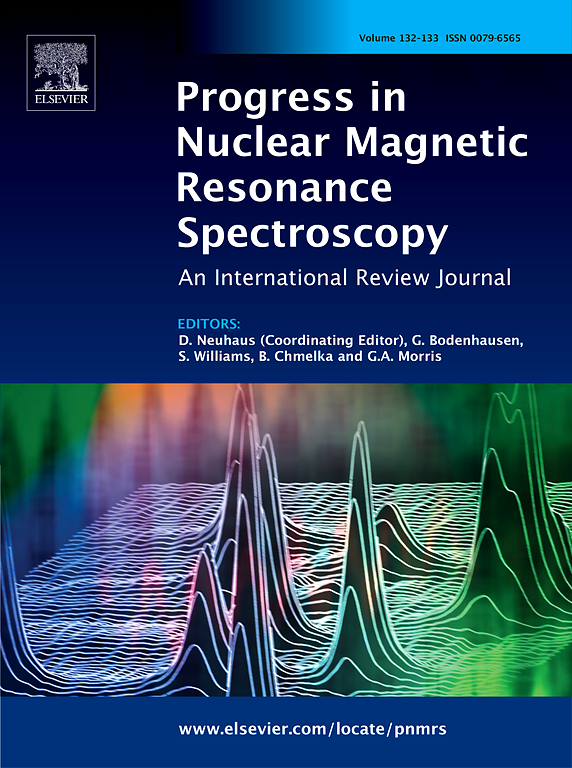Additive fabrication for NMR probe builders
IF 8.2
2区 化学
Q2 CHEMISTRY, PHYSICAL
Progress in Nuclear Magnetic Resonance Spectroscopy
Pub Date : 2025-04-27
DOI:10.1016/j.pnmrs.2025.101563
引用次数: 0
Abstract
Three-dimensional (3D) printing has emerged as a transformative technology for nuclear magnetic resonance (NMR) instrumentation, offering flexibility in the design and fabrication of custom tools that enhance experimental capabilities. Additive manufacturing has made it possible for many NMR labs to build their own magic angle spinning assemblies, sample handling devices, and other critical components. We summarize common 3D printing techniques, such as fused deposition modeling (FDM) and stereolithography (SLA) for polymers, along with metal printing methods like selective laser melting. By facilitating rapid prototyping, 3D printing accelerates the development and optimization of NMR systems, as well as bypassing traditional manufacturing constraints. This review also discusses perspectives on the future of 3D printing in NMR and related methods, providing cost-effective, in-house solutions that increase participation, allow for sharing and remixing of innovations, and broaden applications across chemical, biological, and materials research.

用于核磁共振探针构建器的添加剂制造
三维(3D)打印已经成为核磁共振(NMR)仪器的变革性技术,为定制工具的设计和制造提供了灵活性,增强了实验能力。增材制造使许多核磁共振实验室能够建立自己的魔角旋转组件,样品处理设备和其他关键组件。我们总结了常见的3D打印技术,如聚合物的熔融沉积建模(FDM)和立体光刻(SLA),以及金属打印方法,如选择性激光熔化。通过促进快速原型设计,3D打印加速了核磁共振系统的开发和优化,并绕过了传统的制造限制。本文还讨论了未来3D打印在核磁共振和相关方法中的前景,提供具有成本效益的内部解决方案,增加参与,允许共享和重新混合创新,并扩大在化学,生物和材料研究中的应用。
本文章由计算机程序翻译,如有差异,请以英文原文为准。
求助全文
约1分钟内获得全文
求助全文
来源期刊
CiteScore
14.30
自引率
8.20%
发文量
12
审稿时长
62 days
期刊介绍:
Progress in Nuclear Magnetic Resonance Spectroscopy publishes review papers describing research related to the theory and application of NMR spectroscopy. This technique is widely applied in chemistry, physics, biochemistry and materials science, and also in many areas of biology and medicine. The journal publishes review articles covering applications in all of these and in related subjects, as well as in-depth treatments of the fundamental theory of and instrumental developments in NMR spectroscopy.

 求助内容:
求助内容: 应助结果提醒方式:
应助结果提醒方式:


